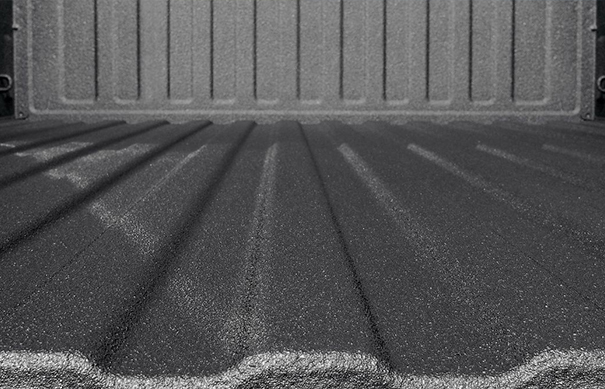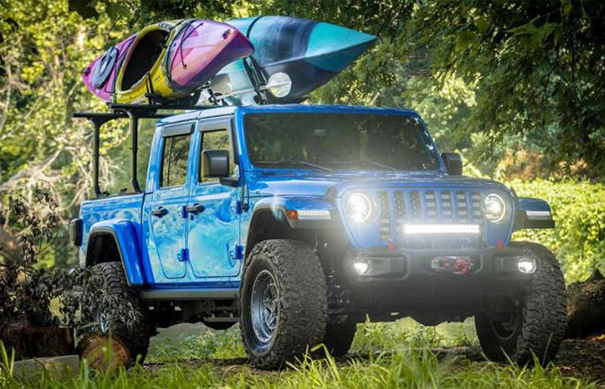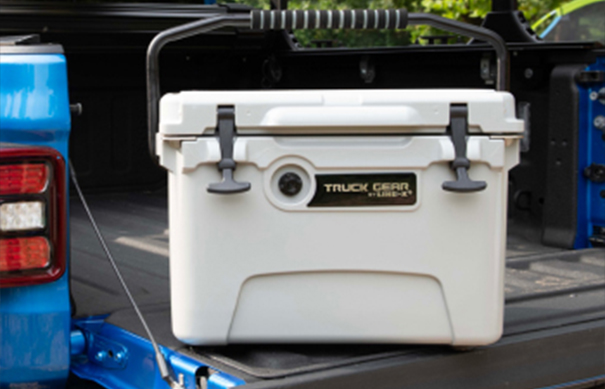Whether you’re gearing up for a thrilling off-road adventure, heading out for a family camping trip, or simply looking to keep your tools and gear safe from the elements, a truck bed cover is an indispensable accessory. But before you rush out to buy one, there's an important step you can't skip—measuring your truck bed. Getting the measurements right is crucial for ensuring your cover fits perfectly, providing the protection and style your truck deserves.
In this guide, we’ll walk you through the entire measurement process, covering the tools needed and step-by-step instructions for measuring length, width, and other key factors. By the time you’re done, you’ll be equipped with all the knowledge and confidence to select the perfect truck bed tonneau cover for your needs. Let’s dive in and ensure you get the best fit for your truck!
Why Accurate Measurements Matter
A poorly fitting truck bed cover isn’t just a minor inconvenience. It can lead to problems like water leakage, wind noise, and even damage to your truck bed or the cover itself. By taking the time to measure correctly, you’re not only ensuring a snug fit but also extending the lifespan of your cover and protecting your investment.
What You’ll Need
First things first, gather your tools. Don’t worry—you won’t need anything fancy:
Measuring Tape: A long, retractable tape measure that’s at least 12 feet is your best bet. You’ll need it to stretch across the entire length of your truck bed.
Paper and Pen: Jotting down your measurements as you go will help you keep track of the numbers and avoid mistakes.
Helper: While not necessary, having a friend to hold the tape measure can make the process easier, especially for longer beds.
Step 1: Measure the Length of the Bed
The most critical measurement for your truck bed cover is the length. This measurement is typically taken from the inside edge of the tailgate to the inside edge of the bulkhead (the vertical wall of the bed closest to the cab).
Start at the tailgate: Lower your tailgate to ensure you’re measuring from the correct starting point.
Measure to the bulkhead: Extend your measuring tape along the bed floor to the inside edge of the bulkhead. Make sure the tape is flat and straight.
Record the measurement: Note the measurement in inches. Most truck bed lengths will fall somewhere between 5 and 8 feet, but it’s essential to get the exact number.
Step 2: Measure the Width of the Bed
Next, you’ll want to measure the width of your truck bed. This measurement will ensure the cover you choose isn’t too narrow or too wide.
Measure at the tailgate: Measure the width of your bed from one inside edge to the other, right where the tailgate meets the bed.
Check the middle: For accuracy, measure the width again at the midpoint of your bed.
Record the measurements: Write down both numbers. If they’re different, use the larger measurement.
Step 3: Double Check Measurements
Accuracy is everything when it comes to getting the right truck bed cover. Before you put away your tape measure, go back and double-check all your measurements. It’s easy to misread a tape measure or jot down the wrong number, and a quick re-check can save you from a costly mistake.
Other Factors That May Impact Fit
While getting the measurements right is crucial, there are a few other factors that can affect how well your truck bed cover fits. These elements might seem minor, but overlooking them can lead to headaches down the road. Let's dive into some of the key considerations:
Bed Rails
Your truck’s bed rails play a big role in how your cover fits. Some covers sit on top of the rails, while others tuck inside or flush with them. If your bed rails are extra wide, have built-in stake pockets, or are equipped with rail caps, these can affect the cover’s fit. Some covers may require rail adjustments or additional clamps, so be sure to consider the style of your bed rails when selecting your cover.
Wheel Wells
Depending on your truck model, the wheel wells can intrude into the bed space. While this doesn’t always affect the cover directly, it’s something to keep in mind if you plan on using certain types of covers, like roll-up retractable options, that require more internal space. If your wheel wells are particularly large, you might need a cover designed to accommodate them.
Bedliners and Mats
If you’ve added a bedliner or mat to protect your truck bed, this could affect how your cover fits. Drop-in liners, in particular, can add a bit of thickness to the bed, which might require a slightly wider cover. Spray-on liners, while thinner, can still create a bit of unevenness along the edges. Some covers are more adaptable to these variations, but it’s essential to check the compatibility of your cover with any bedliners or mats you’ve installed.
Accessories
Your truck bed might be home to more than just cargo. If you’ve installed toolboxes, ladder racks, or even a fifth-wheel hitch, these accessories will need to be factored into your cover choice. For instance, a toolbox at the front of the bed can shorten the usable bed length, requiring a cover specifically designed to accommodate both. Similarly, if you have a ladder rack, you’ll need to ensure your cover can work with it–many retractable or folding covers are designed with this in mind.
Bed Angles
Believe it or not, the angle of your truck bed can also impact the fit of your cover. Some beds are slightly tapered or have angled walls, which can affect how certain covers, especially hard or rigid ones, fit along the edges. While this isn’t a common issue, it’s something to keep in mind if you have a truck with amore unconventional bed shape.
Tailgate
Finally, your tailgate plays a crucial role in how your truck bed cover seals and secures. Some covers are designed to lock with the tailgate, providing an added layer of security. However, if your tailgate has any features–like a step, a camera, or an easy-lift system–you’ll want to ensure that the cover you choose won’t interfere with these functions. Also, if your tailgate isn’t perfectly aligned it could create gaps that might let in water or wind.
Manufacturer-Specific Measurement Guidelines
While measuring your truck bed might seem straightforward, some manufacturers have specific guidelines or nuances that can impact how you take and interpret those measurements. Knowing these manufacturer-specific details can help you avoid any surprises and ensure a perfect fit for your truck bed cover.
Ford
Ford trucks are known for their durable and versatile beds, but they can come with some unique considerations:
Bed Length Designations: Ford often labels their truck beds by approximate length (e.g., 5.5’, 6.5’, 8’). However, the actual measurements might be slightly different, so it’s important to measure the bed yourself rather than relying solely on these designations.
Tailgate Step: Some Ford trucks come equipped with an integrated tailgate step. If your truck has this feature, ensure that the cover you choose is compatible and won’t interfere with the step’s operation.
BoxLink System: If your Ford truck has the BoxLink system—an accessory mounting system along the bed walls—you’ll want to ensure your cover doesn’t obstruct these mounting points, especially if you plan to use them regularly.
Chevrolet/GMC
Chevrolet and GMC trucks often share platforms, but there are still a few things to watch out for when measuring:
Wide-Body Design: Some Chevy and GMC trucks feature a slightly wider bed design, especially in the Silverado and Sierra models. This can affect the fit of certain covers, so make sure to measure the width carefully, particularly if your truck has flared bed sides.
CornerStep Bumper: Many newer Chevy and GMC trucks come with a CornerStep bumper, which provides easier access to the bed. While this usually doesn’t interfere with bed covers, it’s worth checking to ensure your cover won’t obstruct access to the steps.
Multi-Flex Tailgate: The new Multi-Flex tailgate on some models can fold in multiple ways, adding versatility but also potential fit challenges. Ensure the cover you choose doesn’t interfere with any of the tailgate’s functions.
Ram
Ram trucks often feature bold designs and innovative storage options, which can impact how you measure for a cover:
RamBox Storage: If your Ram truck is equipped with the RamBox Cargo Management System—integrated storage bins along the sides of the bed—this will impact your cover choice. You’ll need a cover specifically designed to fit over the RamBox, as standard covers typically won’t work.
Tailgate Assist: Many Ram trucks feature a tailgate assist system that makes opening and closing the tailgate smoother. While this is a convenient feature, be sure your cover doesn’t impede the tailgate’s operation, particularly if it has additional locking mechanisms.
Toyota
Toyota trucks, especially the Tacoma and Tundra, have a few unique features worth considering:
Composite Bed: Many Toyota trucks come with a composite bed material rather than traditional steel. This can slightly affect how certain covers fit, especially those requiring clamps or drilling. Be sure to choose a cover compatible with composite beds to avoid any issues.
Deck Rail System: Toyota trucks often come equipped with a deck rail system for securing cargo. If you use this system regularly, make sure the cover you select allows easy access to the rails or comes with adapters that won’t obstruct the rail system.
Shorter Beds: Some Tacoma models, in particular, have shorter bed lengths compared to full-size trucks. Double-check your measurements to ensure you’re not accidentally selecting a cover designed for a longer or standard-size bed.
Nissan
Nissan trucks, like the Frontier and Titan, have a few specific considerations when it comes to bed covers:
Utili-Track Channel System: The Utili-Track system is a common feature in Nissan trucks, offering adjustable tie-down points along the bed rails. When choosing a cover, ensure it’s compatible with this system, as some covers may block access to these channels or require special adapters.
Pro-4X Models: If you have a Pro-4X model, which is designed for off-roading, the bed might have slightly different dimensions or features, such as a factory-installed bed liner, that could impact cover fitment.
The Benefits of Professional Installation for Your Truck Bed Cover
So, you've measured your truck bed, chosen the perfect cover, and you're ready to hit the road. But before you grab that toolbox and dive into a DIY installation, let’s talk about why you might want to consider professional installation.
1. Expertise and Experience
Professional installers bring a wealth of experience to the table. They’ve seen it all—from standard installs to tricky, custom setups. Whether it’s dealing with unique bed features, ensuring a watertight seal, or properly aligning the cover, a professional knows the ins and outs of the process, which reduces the likelihood of mistakes or issues down the road.
2. Perfect Fit Every Time
Achieving a snug and secure fit can be tricky. Professionals use specialized tools and techniques to ensure your cover is perfectly installed, preventing leaks, reducing wind noise, and ensuring smooth operation.
3. Saves Time and Effort
Let’s face it—installing a truck bed cover can be time-consuming, especially if it’s your first time doing it. Between deciphering the instructions, ensuring you have the right tools, and actually completing the installation, it can take several hours. A professional, on the other hand, can typically complete the job in a fraction of the time, freeing you up to do the things you actually enjoy—like planning your next adventure.
4. Avoids Potential Damage
Installing a truck bed cover might seem straightforward, but there’s always the risk of damaging your truck or the cover during the process. Whether it’s accidentally scratching the bed rails, over-tightening clamps, or misaligning components, the DIY route can lead to costly mishaps. A professional installer knows how to handle these materials with care, minimizing the risk of damage and ensuring everything is installed according to the manufacturer’s specifications.
5. Customization and Upgrades
If you’re interested in customizing your truck bed cover or adding additional accessories like a bedliner orcargo management system, a professional installer can help you with that too. They can recommend compatible best products and integrate everything seamlessly, providing you with an optimized truck bed setup that meets all your needs.
Ready to transform your truck with LINE-X?
Your truck isn’t just a vehicle—it’s a partner in your adventures, a trusty sidekick in your daily tasks, and a statement of your style. So why settle for anything less than the best? A perfectly fitted truck bed cover from LINE-X isn’t just about looks; it’s about making sure your truck is ready for anything life throws at it. Whether you're heading out on a cross-country road trip or just want to keep your gear secure, we’ve got you covered.
Ready to upgrade? Request a quote or visit your local LINE-X dealer today to find the perfect cover, get it installed with precision, and hit the road with confidence. Your truck deserves the best in protection and style—experience the LINE-X difference!




 English
English
 French Canadian
French Canadian





